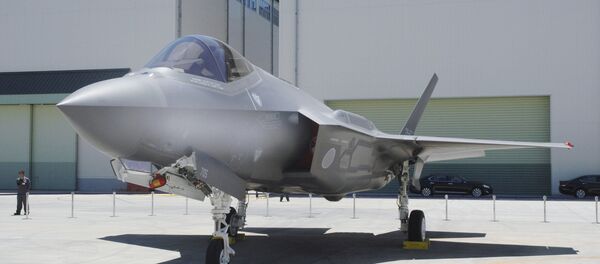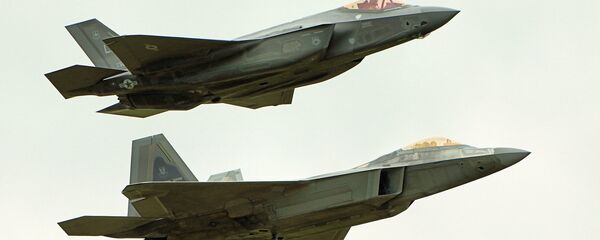The US Navy has officially called off its search for Japan's missing F-35A, with Tokyo promising to continue looking for the plane's remains, as well as its missing pilot, using its own state of the art military and civilian vessels.
The US deployment included a guided-missile destroyer, multiple P-8A Poseidon aircraft, at least one U-2 spy plane and a remotely operated CURV 21 salvaging vehicle with advanced sonar onboard. The US swept the area where the plane had disappeared on April 9, combing over 5,000 square nautical miles of ocean.
Amid the lack of new information, CNN has swathed the accident in an air of mystery, reporting that a full month after the plane's disappearance, Japan and its US allies were no closer to finding what caused it.
"This week, the Japanese government announced it recovered part of the jet's flight data recorder, but it was so damaged that the cause of the expensive stealth fighter crash is still a mystery," CNN reporter Ivan Watson said in a news report on the subject.
The news network's bewilderment is not without merit. Among its series of safety systems, the F-35 is said to be fitted with a transponder which could reveal its location on radar in the event of an emergency, including a crash. What happened to that transponder is unknown.
Moreover, in hopes of expediting the search, the US Navy deployed a Towed Pinger Locater 25, a device specifically designed to detect pings from the F-35's emergency systems at depths of up to 25,000 feet, but had no luck.
In late April, Japanese media sparked fears that the plane's security may have been compromised before it went down, with Nikkei reporting that the US military was "looking into" the risk that the plane's oxygen system had been corrupted by hackers, "perhaps during system updates –to plant the seeds for future software problems."
The concerns were exacerbated amid fears stoked by US media of a "nightmare scenario" in which America's adversaries Russia or China might join the search for the plane. In the month since, these fears proved unsubstantiated, with Japanese Defence Minister Takeshi Iwaya saying there was no unusual activity to report from the presumed crash site.
US acting Defence Secretary Patrick Shanahan similarly indicated that he was not at all concerned about the prospect of China getting to the crash site first, saying the Japanese were leading the investigation, with the US "working very collaboratively with them, and we've got a lot of capability if what they have doesn't prove to be sufficient, okay?"
Japan's fleet of F-35s presently stands at a dozen F-35As, a conventional takeoff and landing variant of the aircraft. In late December, Japan increased its total F-35 order to 147, including F-35As and F-35B variants of the plane.






